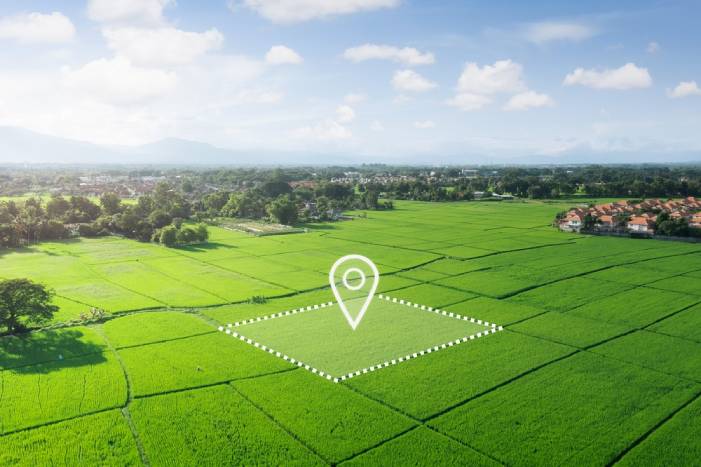Bhu-Aadhaar aims to digitize land records, In the Union Budget 2024, the government planned to digitize the land records for rural and urban regions. It is a welcome step but there are many issues with its proper implementation all over India within the next three years as projected in the Budget.
Currently, the land records are computerized in 24 of 28 states in India. Contrary to this, land records are not fully computerized in four northeastern states: Arunachal Pradesh, Meghalaya, Mizoram, and Sikkim. It becomes imperative, therefore, to devise a system of uniformity of the States on the maintenance of the records of land.
There are five States in India that have separate land records for city and rural properties: They are Maharashtra, Goa, Karnataka, Tamil Nadu, and Andhra Pradesh. The rest of the States have only one land record.
The issue of inadequate capital support for the digitization of land records was never an impediment to the southern States particularly Karnataka, Andhra Pradesh, and Tamil Nadu which carried out the process independent of external funding from the period between 2001-2007. Later in 2008, to modernize the inefficient manual-based Land Records System of the country, the Government of India launched a project known as, the Digital India Land Records Modernisation Programme.
What is Bhu-Aadhaar?
Bhu-Aadhaar is the generation of a Unique Land Parcel Identification Number (ULPIN) for each land across the State. Once the Unique Land Parcel Identification Number (ULPIN) or Bhu-Aadhaar is generated, it is stamped on the physical land record document held by the owner. The same ULPIN will be permanently attached to the plot of land. Even if the land is transferred, subdivided, or undergoes any change, the ULPIN will remain the same for that geographic boundary.
The main advantages of ULPIN are that it provides a unique digital identity to every plot of land ensures accurate land records through ground-level mapping and measurement and also removes ambiguity in plot identification, which often leads to land disputes.
This was revealed quite recently when the Andhra Pradesh State became the first one amongst all the States to achieve the targets of ULPIN when it went a step ahead by achieving 100% coverage. The State of Andhra Pradesh has the best practice of land records maintenance than other States of India as Bhu-Aadhaar is also linked with Aadhaar numbers of all owners of the land. It was also revealed that the States of Karnataka, Odisha, Telangana, Madhya Pradesh, and Chhattisgarh have achieved 60 – 90% ULPIN coverage.
Administrative problems and operational constraints in three states including Uttar Pradesh, Bihar, and Assam are the reasons for the delay in ULPIN implementation. This is because digitized cadastral maps, which contain precise details about land sub-divisions and boundaries of the size, have not been available in some States, which has also affected the interlinking records for some states.

Challenges that Rural & Urban Properties face in Digitizing:
The principal problem is that for many of the states in India, the Department of Stamps and Registration records do not correspond to the Revenue Department record. Many States cannot automatically migrate the details of a particular property registration concerning land to enable its mutation online at the Revenue Department. It is carried out in only a few States currently. It has been observed that digital mapping of land parcels has not been implemented in many States at all, mainly for urban properties.
A special question of such properties is that, for example, in many States, the details of plot layout approval and land geo-coordinate details are not indicated in title transfer documents.
Suggestions for effective Execution of Bhu-Aadhaar across India:
1. It should be noted that a unified measurement of the land for all the urban properties should be developed. While properties in some States like Andhra Pradesh, Telangana, Punjab & some areas of Haryana are calculated in terms of square yards, some States have adopted square feet; few have adopted square meters. Similarly, there is a need for the future development of a common method of measuring the land for all the agricultural properties in India. Hectares should be deemed as the common methods of rural nature of properties all over India. Currently, most of the rural land records in several States are measured in other vernacular terms such as bigha, biswa, biswani, kanal, marla, decimal, cents, guntas, etc.
2. A photograph of the land owner along with land coordinates should be reflected in the land record having ULPIN no. in all States. Currently, the photographs of the land owners for the rural properties are reflected in the land record only in Andhra Pradesh and Telangana. Besides the present practice of photographing title deeds, it is suggested that the title deed document number with the year of acquisition alongside the information of the concerned Sub Registrar Office in which the land owner possesses the property should be matched with ULPIN in the future. In addition, any property mortgages or court attachments should also have a reference to ULPIN.
3. For urban properties additional information that should be linked to each ULPIN are plot layout approval details, property tax assessment numbers, and electricity connection assessment numbers. This will assist in generating more revenues for the urban bodies and will also check the misuse of commercial electricity connections in the name of domestic usage.
4. Looking to the future, more specifics about the land use classification should be included in ULPIN by expanding the digit code with the additional two digits for the urban area. This will further assist in establishing the usage of land. Similarly, for the rural agricultural land properties, two more digit figures can be appended in ULPIN while discussing crop patterns cultivated in the agricultural field to have the correct figures or data of crops.
5. Documents that have to be registered, particularly the sale deeds should contain details of the land record number or ULPIN or any other identification number assigned to the land and geo-coordinates of the land. For the urban plots, extra details concerning the layout of the plot, the property’s tax identification number, and the electric identification number (if available) had to be provided as compulsory to prevent property issues.
Looking for properties to buy, click on the link

